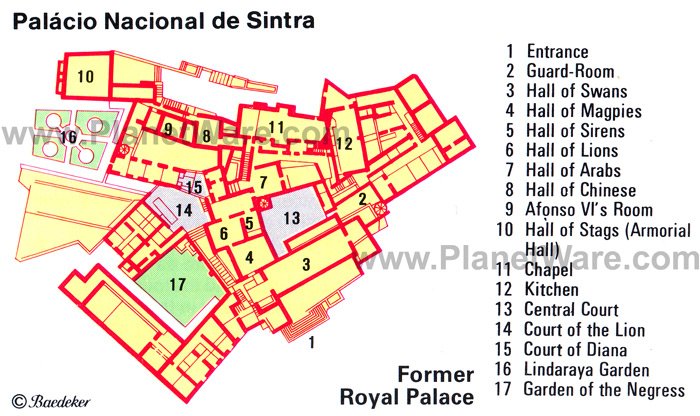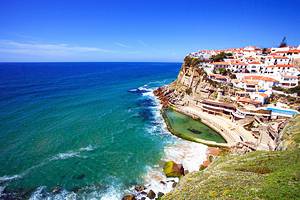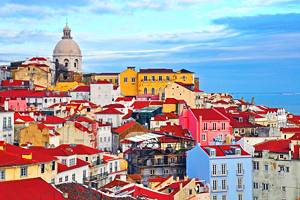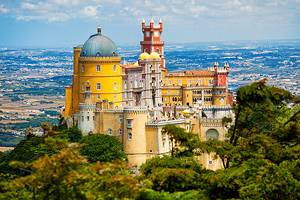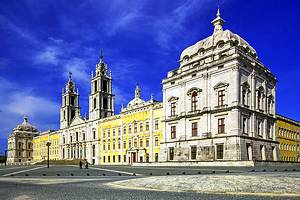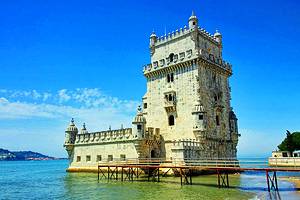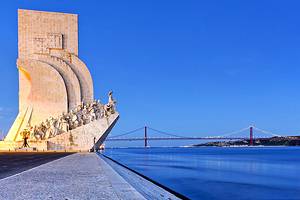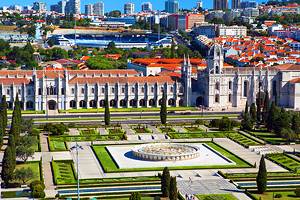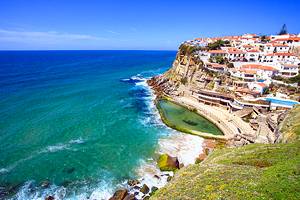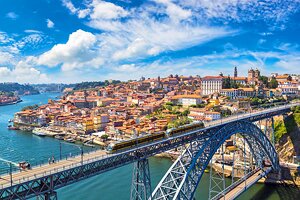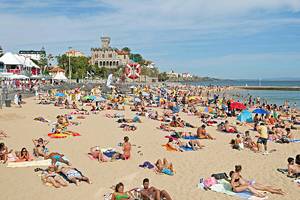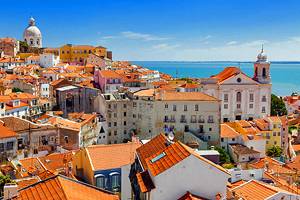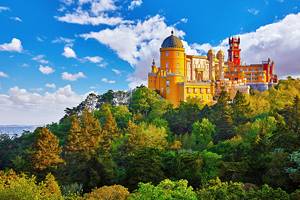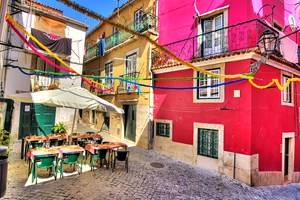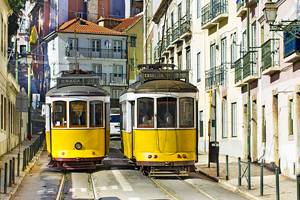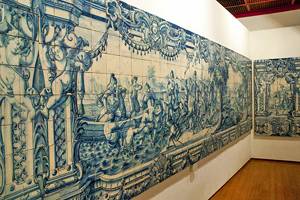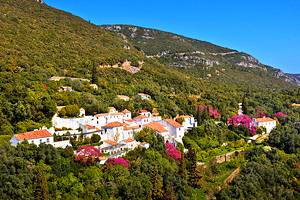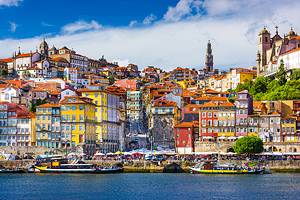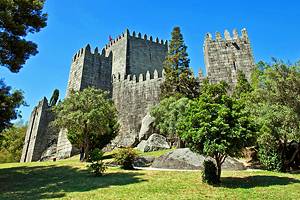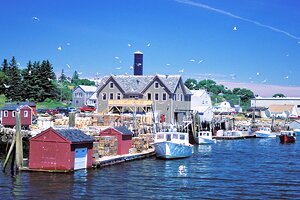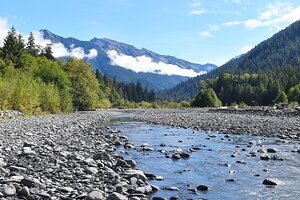Visiting the Palácio Nacional de Sintra: 10 Top Attractions
The spectacular National Palace of Sintra stands in the heart of the old town and is part of the cultural landscape of Sintra, recognized by UNESCO as a World Heritage Site.
Built in the 14th century by King João I on a site once occupied by a Moorish castle, the palace is immediately discernible by its two conical chimneys - a distinguishing feature and the hallmark of Sintra itself.
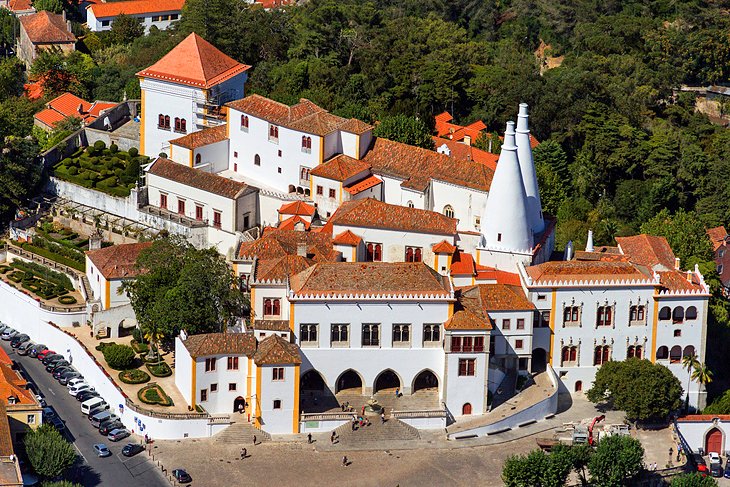
Lavishly appointed, the palace quickly became the summer retreat for a succession of Portuguese monarchs and their retinue, and visitors today are regaled with one of the country's most sumptuous former royal residences.
With its richly decorated rooms, galleries, and corridors, the interior dazzles with an eclectic flourish of Moorish, Gothic, and Manueline architectural styles and some of the most talked about ceilings in the land - visitors spend a good deal of their time peering upwards, admiring truly impressive medieval brushwork and craftsmanship.
Learn more about the highlights of this magnificent landmark with our list of the top attractions at the Palacio Nacional de Sintra.
1. Sala da Brasões
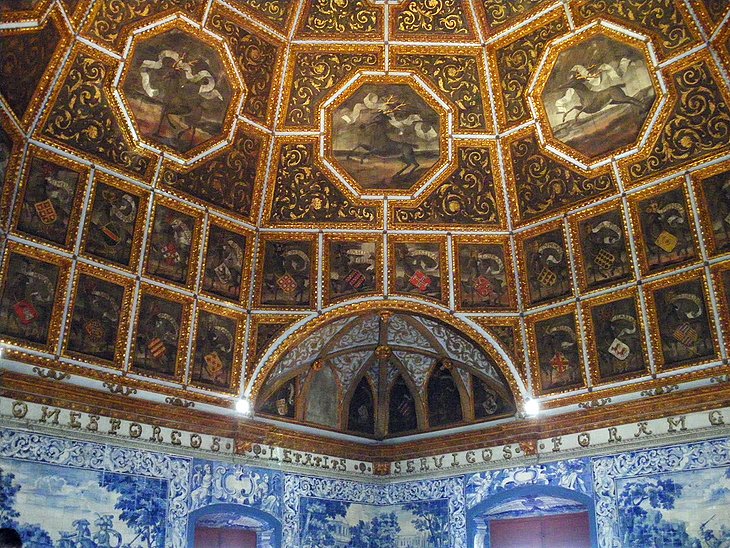
A visually stunning Manueline door frame sculpted with plaited and voluptuous stonework invites visitors over the threshold and into the palace's dazzling Coats of Arms room.
Housed in the Torre da Meca on the upper level, the domed ceiling of this majestic octagonal hall is embellished with stags clutching the coats of arms (brasões) of 72 noble Portuguese families. The heraldic shield of King Manuel I, who had the room decorated in the early 16th century, is positioned in the center of the ceiling, while those of his eight children are grouped around it.
The hall's gilded shimmer is further illuminated by the deep blue hues of azulejos tiles depicting hunting scenes that adorn the lower walls, added in the 18th century.
2. Sala dos Cisnes
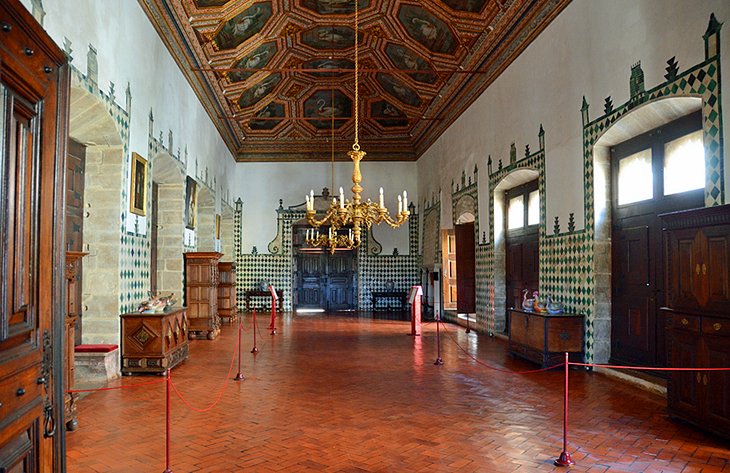
The former great hall is the largest room in the palace, where receptions, feasts, banquets, and major ceremonies were held. Built by King João I in the early 15th century, it's known as the Hall of Swans for the 27 wooden octagonal panels painted with swans (cisnes) that adorn the ceiling. Each swan wears a gilded collar, and the birds are set in graceful repose in naturalistic backgrounds. Checkerboard patterned green and white azulejo tile panels enhance the walls.
Among the decorative art on display is a set of quirky animal-shaped Chinese porcelain tureens manufactured in the late 18th century during the Qing dynasty.
3. Sala das Pegas
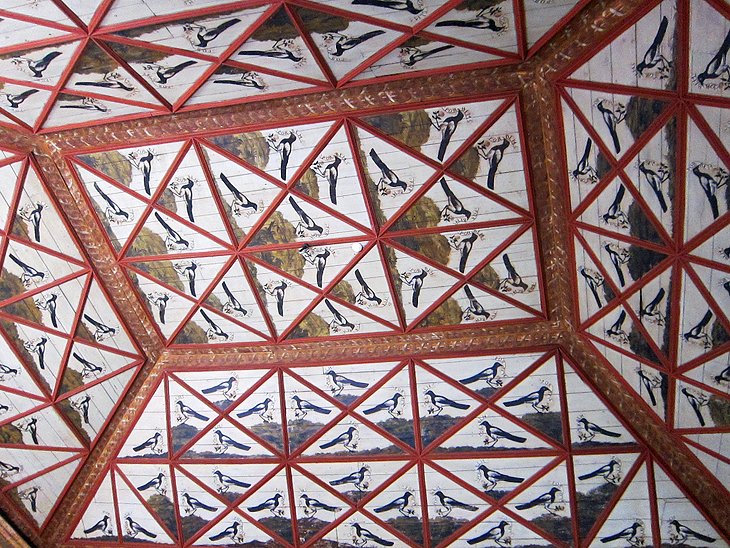
The central patio and the stucco façade of the Water Grotto (Gruta dos Banhos) present pleasing photo opportunities before entering the Hall of Magpies. Constructed during the reign of João I, this antechamber is where dignitaries and foreign ambassadors were received.
Its name derives from the decoration painted on the ceiling: 136 jaunty magpies (pegas) painted on the wooden panels, each one holding in its beak a shield with the king's motto, "Por Bem" (For Better), and, in one of its claws, a rose.
According to legend, the king's reaction to his queen after being caught in flagrante with a lady-in-waiting was to mutter foi por bem - it was for the best. But angered by the subsequent whispering taking place behind his back, the dallying monarch had the ceiling painted with chattering magpies as a rebuke to the court women and their idle gossip.
The majestic function of this room is exemplified by decorative pieces such as a beautiful 17th-century Bargueño cabinet from Spain in walnut, golden metal, bone, and ivory.
4. Sala dos Árabes
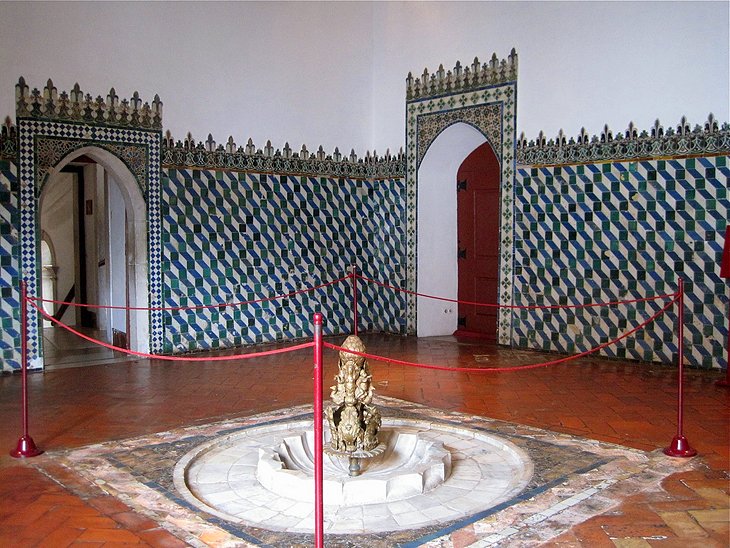
Used as a bedchamber by King João I in the 14th century, the Arab Room is wrapped in a swathe of azulejo tiles of intriguing parallel-piped patterns that lend the salon a dynamic, three-dimensional quality.
The room was once supplied with water that trickled from the fountain sunk in the center of the floor. Consisting of a white marble basin, the water gurgled from the gilded bronze stem sculpted as Neptune, with swans and mermaids surrounding him and an artichoke at the top - all typical of the decorative motifs favored by King Manuel I who added the fountain in the early 16th-century.
This is one of the most intimate spaces in the palace and best appreciated in silence.
5. Capela
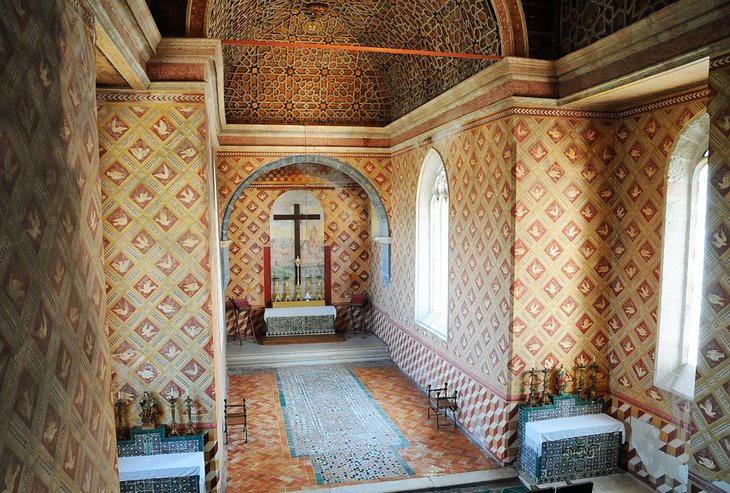
Founded in the 14th century by King Dinis, the palace's medieval Palatine Chapel is distinguished by a carved oak and chestnut ceiling of elaborate radial and star compositions characteristic of Moorish art. The unbroken symmetry of the latticework is stunning and rich in detail.
Likewise, the paved ceramic floor is also composed of Moorish-style geometric design, though this was probably set later during the reign of King Afonso V.
From the chapel's upper tribune, visitors can gaze up and down at this twin decorative feast - among the oldest examples of Mudéjar work in Portugal. The lofty perch also affords fine views of the 15th-century wall frescoes that feature an endless flock of white doves, each with an olive branch in its beak and symbolic of the Holy Spirit.
6. Quatro de Dom Afonso VI
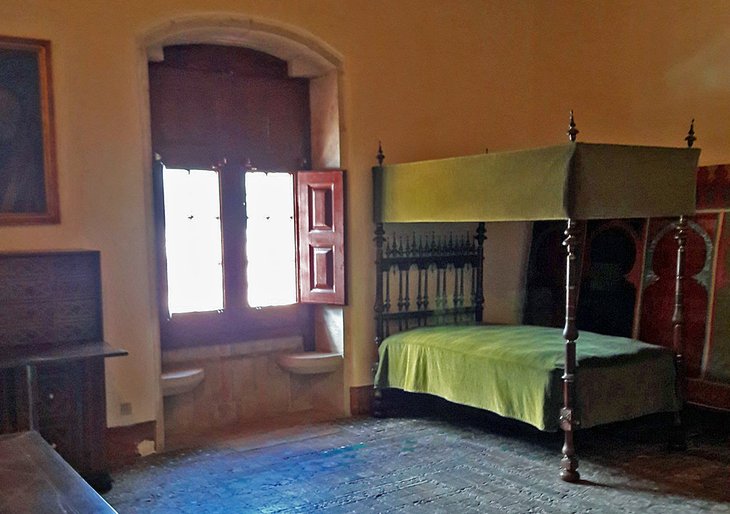
Linger outside King Afonso VI's room and ponder the fate that befell the hapless monarch. The ailing king, stricken with madness, was incarcerated here for nine years until his death in 1683 after losing the throne to his brother, Pedro II. It is the only room in the palace with iron bars. Simply furnished, the bedchamber-prison's flooring is a mixture of Islamic mosaics and tiles dating from the first half of the 15th century.
7. Kitchens
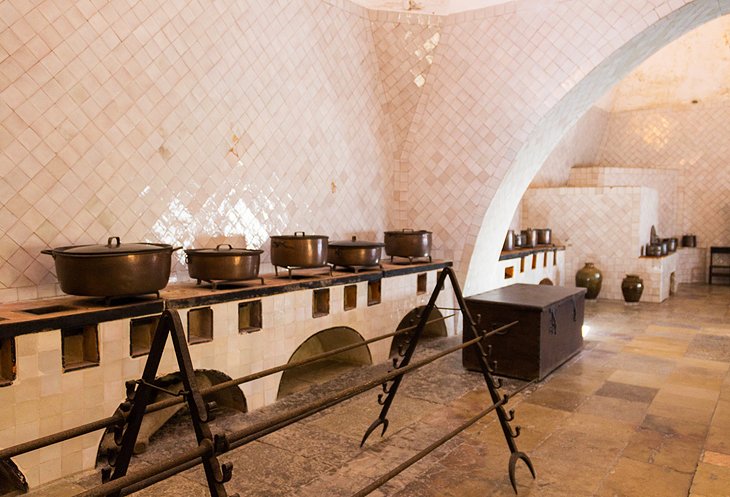
The palace's kitchen is monumental in its dimensions, not least because of the two massive conical chimneys, each approximately 33 meters high, which form the ceiling. Their sheer size and appearance make them unique in Europe, and they remain emblematic of the palace and of Sintra itself.
From the kitchen floor, visitors can peer up towards the tapered chimney vents, and if it's blustery outside, listen to the growling wind funneling its way down into the hall. Built by King João I, the kitchen was used for preparing royal banquets, and the original roasting spits and various copper and iron kitchenware are on display.
Interestingly, among the utensils is a 17th-century Ming dynasty martaban jar crafted in sandstone. Poignantly, the royal coat of arms of Portugal and the House of Savoy on the wall dates from Queen Maria I, the palace's last royal incumbent.
8. Sala da Galés
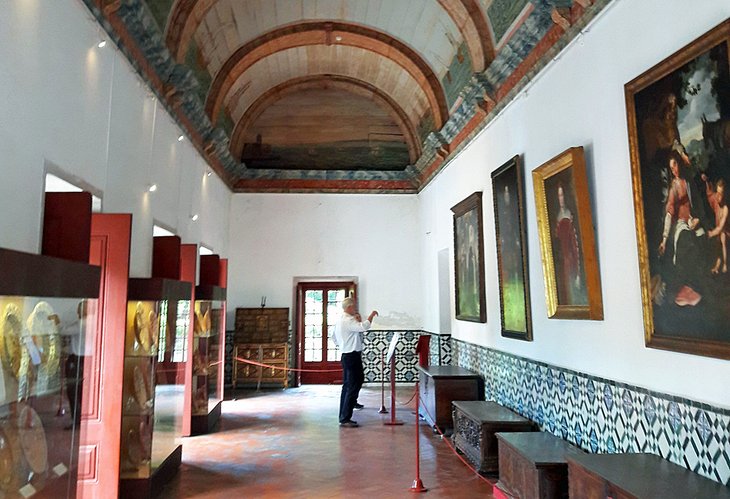
The rounded wooden ceiling of the Galleon Room is appropriately illustrated with paintings of assorted ships in full sail representing the major naval powers of the period: Portuguese, Dutch, and Ottoman flags and pennants are clearly visible fluttering in the wind. Various maritime cities are also depicted.
The long and narrow rectangular hall dates from the 17th century and is, in effect, a small museum, with Spanish and Portuguese 18th-century earthenware particularly well represented.
A pair of exquisite Bargueño cabinets are also on display, one from the 18th century, the other probably made in the 17th century. Both are beautifully crafted in wood, turtle shell, ivory, velvet, and wrought iron.
9. Sala de Dom Sebastião
On his frequent visits to the palace, King Sebastião, who reigned from 1554-78, would use this bedchamber as his sleeping quarters. However, the sumptuous four-poster bed dates from the 19th century. Italian in origin and made from rosewood inlaid with ebony, it's ornamented with silvered brass, copper, and glass. The headrest is embroidered with the coat of arms of the Counts of Sabugal.
The dazzling celestial globe of yellow metal and iron placed near the window was made in Augsburg, Germany by Christophe Schissler around 1575 and may very well have been used by the monarch.
10. Sala das Sereias
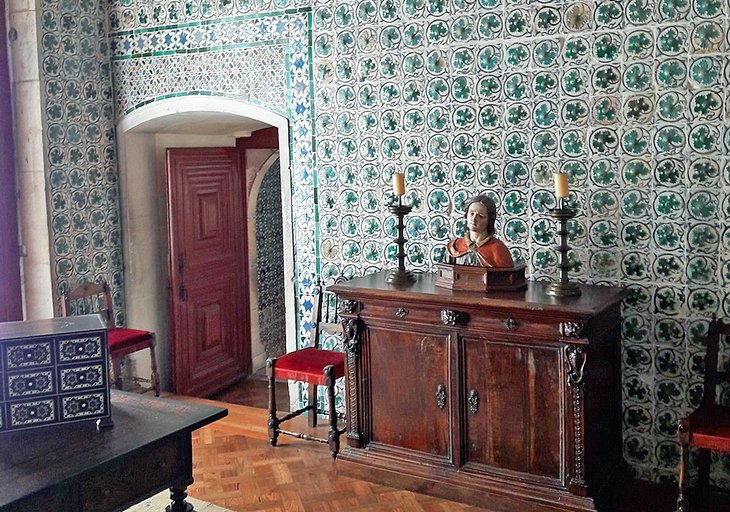
Once used by King Sebastião as a wardrobe, the tiny Room of the Mermaids (sereias) is a charming anomaly. After the wooden ceiling was painted in the 18th century with mermaids playing musical instruments, this elegant salon was renamed and took on an identity of its own.
The outstanding feature, though, remains the original azulejos tiles on the walls, which date from the early 16th century. Actually, the unusual thickness of its walls has led historians to speculate that the room could be a surviving part of a turret of the original Moorish fortress.
Guided tours are available in Portuguese, English, and Spanish, and reservations and online discounts are available via the website.
More Related Articles on PlanetWare.com
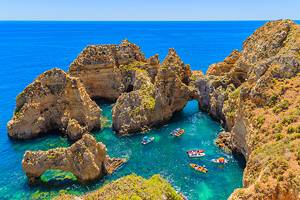
More Magical Attractions in Portugal: Taking time out to explore a particular building or museum in-depth helps define the cultural heritage of Portugal. It also adds an extra dimension to the sightseeing experience. Spend an hour in the stunning Mosteiro dos Jerónimos, and you begin to appreciate just how illustrious the incredible Age of Discovery became.
Likewise, browse the unique collection of tile wear and ceramic art at the Museu Nacional do Azulejo-Convento da Madre de Deus, and you'll appreciate the complicated technique behind their manufacture and the aesthetics surrounding their design.
In fact, it's worth getting acquainted with as many of the attractions in Portugal as possible to better understand the history of this extraordinary country. Use our itineraries page to plan your trip.
